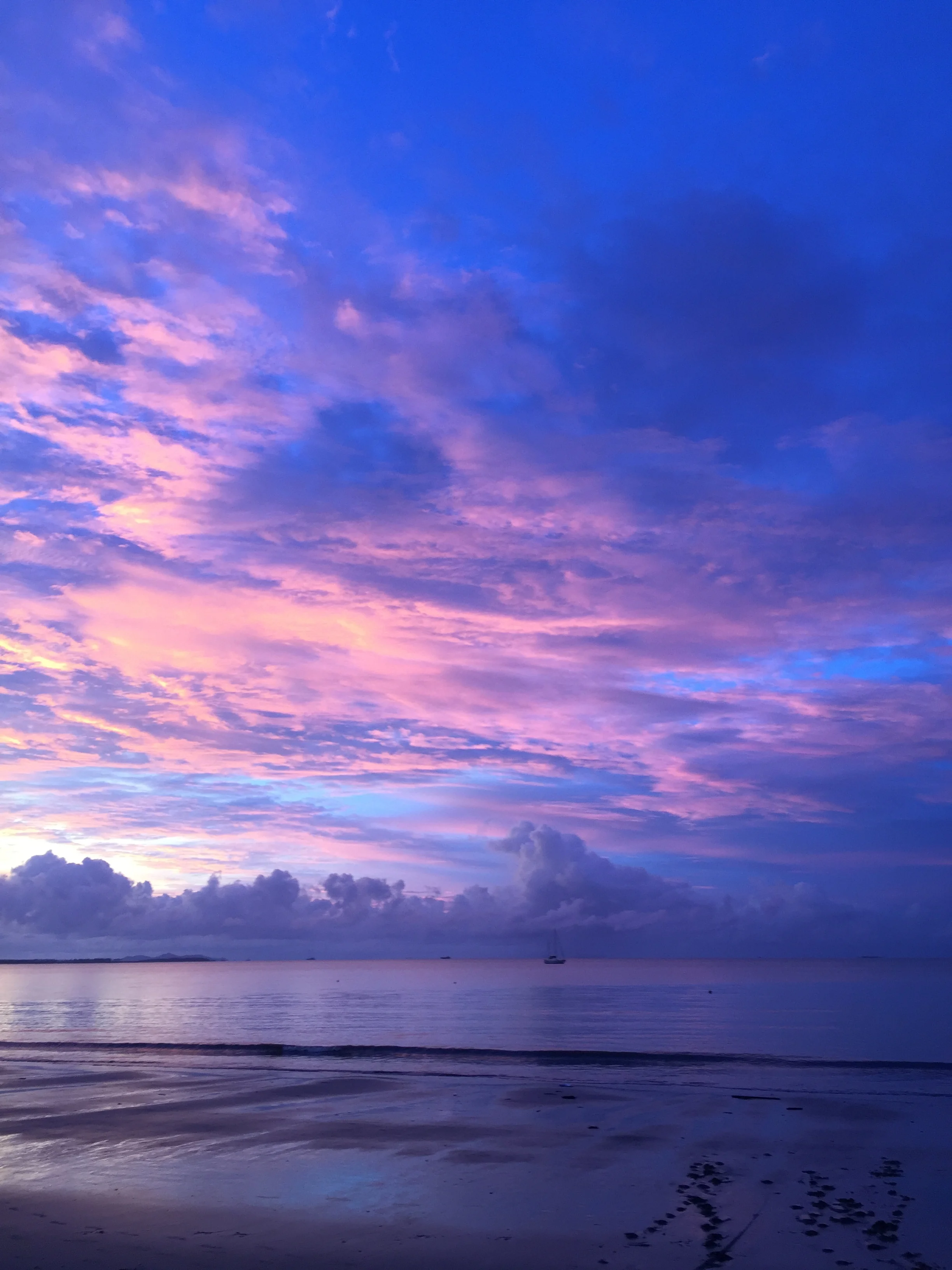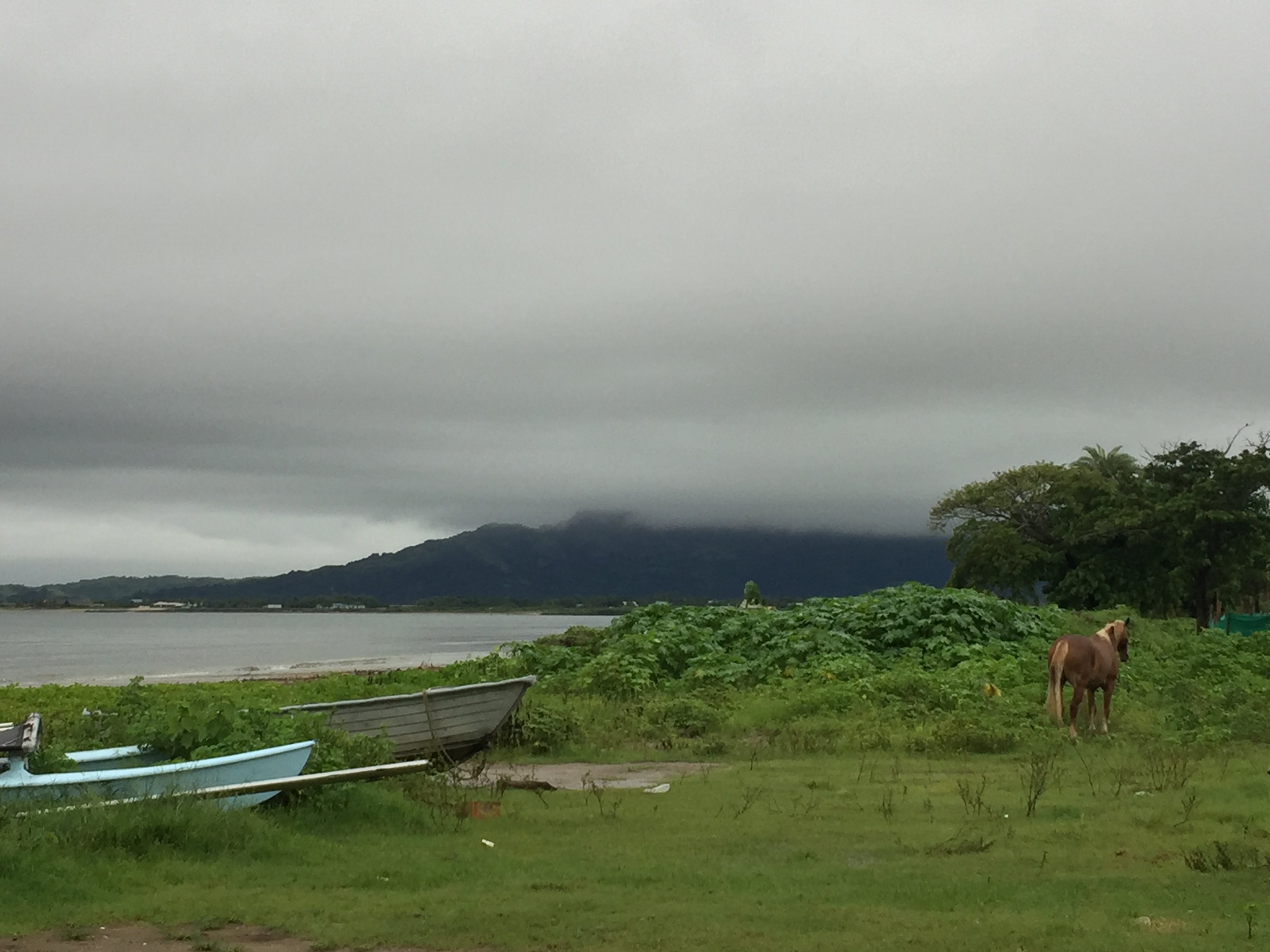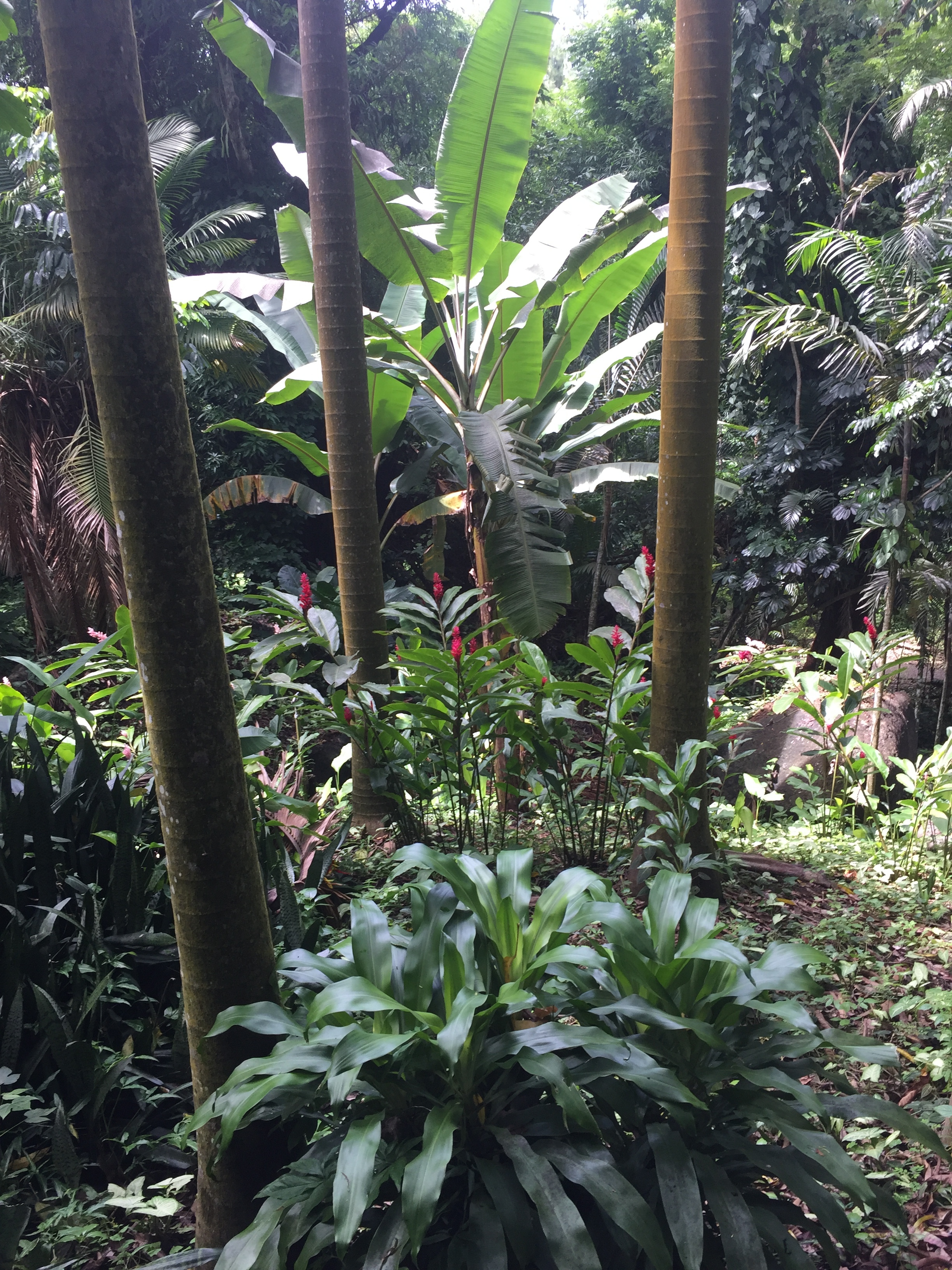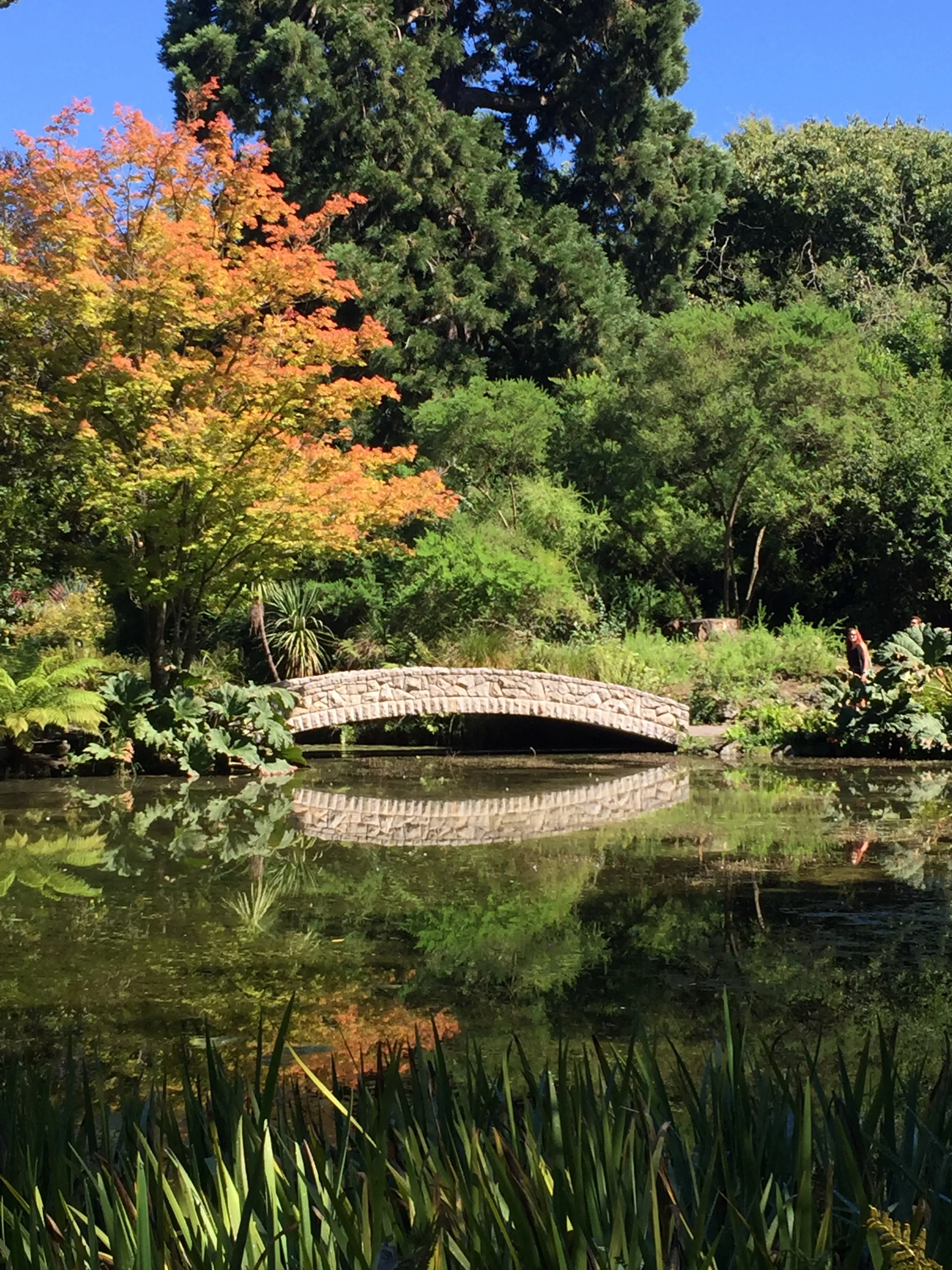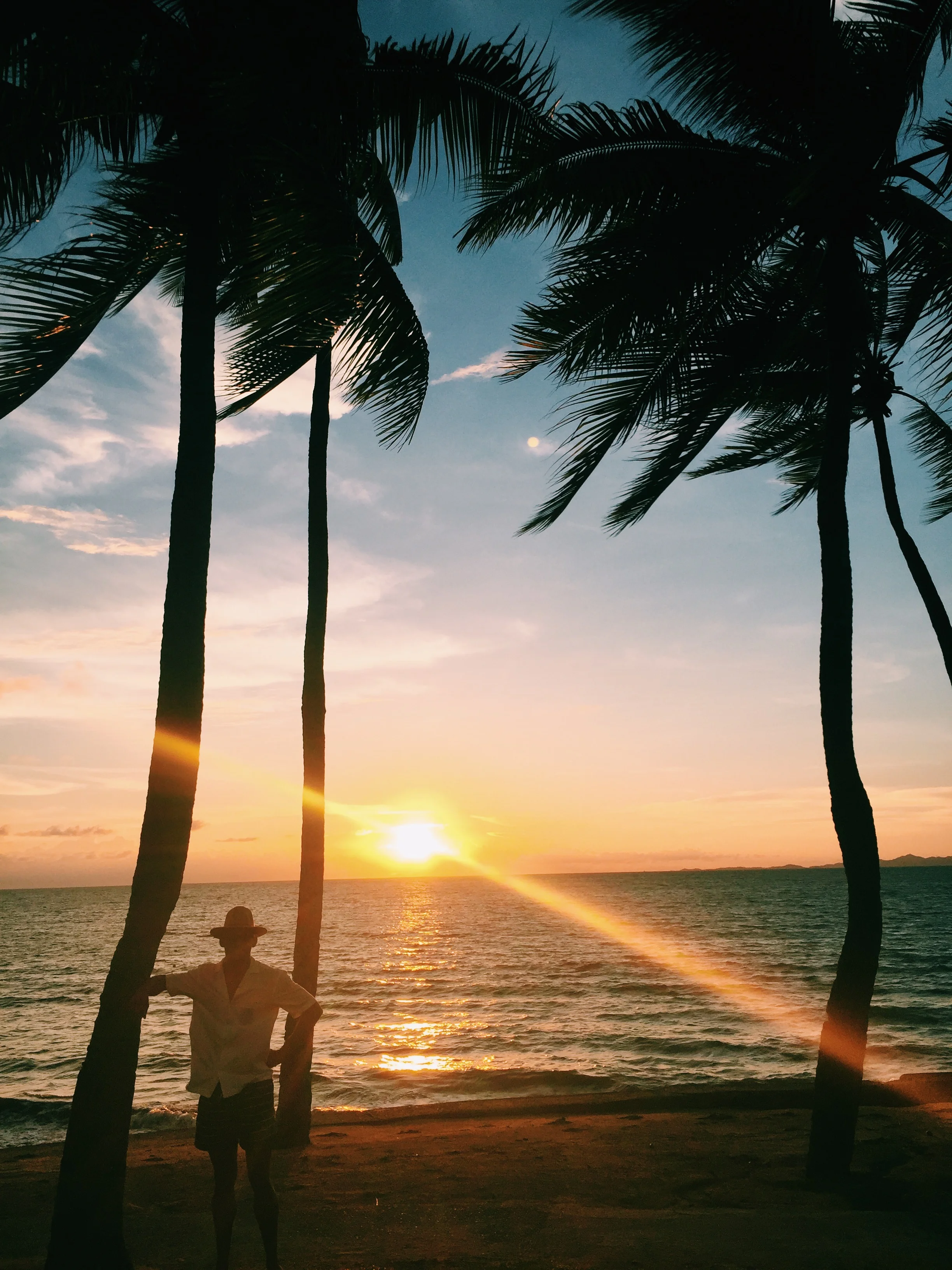Fiji: Another Perspective
The latter half of our week in Fiji was not as cushy. We stayed at the Bamboo Backpackers Hostel in Viti Levu on the main island.
The entrance to the Bamboo Hostel
It's dorm style housing, which provides the bare minimum. That being said, it was under 20 dollars per night for us both and was right on the ocean.
Horses would pace the beach looking for riders, such as the white horse above
Unlike our introduction to Fiji, we filled the rest of our time on the island with adventure days. As predicted, we got a far better feel for the country once we left the resort. Fiji is a nation that's undergoing an economic boom. Construction of condos, offices, commercial space and new resorts sprawled across empty lots. It was evident that the island is experiencing significant foreign investment. Yet, it's not solely outside influence. The government is committed to bettering infrastructure, education, and overall living conditions. Billboards boasting that more students were in school than before lined the streets.
Outside of the Nadi bus terminal
While waiting for the bus at central terminal downtown, we met a couple who Will dubbed professional travelers. She's originally from Columbia and he from France. They've been backpacking for four years, working and volunteering along the way. They had a layover in Fiji, so were only in town for a few hours. Keen on seeing the beach, we road the bus with them to our hostel.
The bus literally rode on the beach to our hostel
We shared Fiji Gold's with them on the beach, and they completely normalized backpacking for us. Their biggest advice was not to over plan.
One of the biggest draws of hostels such as Bamboo is the ease of meeting people. The environment beckons chatting with fellow travelers. Learning where they're from, where they've been, where they're going. We sat at the long, outdoor picnic tables, and met a British couple that evening. We proceeded to meet up with them the following nights as well, comparing notes on living in London compared to Washington DC.
Mornings started early at the hostel, since we were sharing a room. Weak instant coffee and muesli for breakfast with tropical fruit, always papaya. We found most fellow travelers were from Australia or Germany, so muesli was always on the menu.
On our first full day, we set out to the Garden of the Sleeping Giant followed by the Sabeto Hot Springs and Mud Pool. The Garden of the Sleeping Giant was magnificent. It truly felt like we were walking through a hidden--though quite polished-- tropical rain forest.
We learned Fiji has a receptive climate for blue-green lagoons, rain and pine forests, beaches, as well as mountains. Remarkably, this diverse landscape is spread over 300 islands. Upon entering the garden, you're given mosquito repellent, due to the extreme humidity. The Garden has an extensive collection of over 2,000 Asian orchids and Cattleya hybrids.
We traversed a canopy-covered boardwalk, lily ponds, trickling fountains, and finally into the lush, thick aired rain forest.
Honesty, it was like walking through a fantasy.
Once we finished, we were treated to a cool glass of "topical juice."
After, we went to the hot springs and mud bath. The Sabeto hot water springs are considered a therapeutic natural thermal mud spa. We were told locals believe that the sulphur in the hot springs contain healing properties. A local Fijian walked us around, and told us he treats himself to the hot springs three times a week and the mud pool one a week. He asked us how we took baths in the States. We replied: we don't.
New to us, we completely covered ourselves in the restoring mud. We walked around for ten minutes or so to allow the mud to dry. The scenery was stunning.We proceeded to get into a pool of muddy water. Then, into the hot spring.
And it indeed feel rejuvenating.
When we asked the guy who drove us if he had any lunch recommendations, he said he'd take us to one of his favorite spots. The Blue Marlin. It was a popular local place, comparable to Fijian fast food. We sat outside and he ordered for us. We got fish and chicken soup with a side of cassava root. Cassava grows everywhere and is a staple aspect of the Fijian diet, lauded as a good source of energy. He taught us to have some soup, then a bite of the cassava. He said this technique was applicable to any main course. We were also served a side of chilis to take bites of as well. They were no joke.
We really enjoyed chatting with him. Fiji’s population is just under a million people comprised of indigenous Fijians, Indians, and Chinese. While English is the official language, speaking Fijian and Hindustani is common. He stressed that Fiji is a multi-cultural and extremely accepting nation with everyone coexisting, regardless of religious beliefs. Fijians are typically Wesleyan. However, protestant denominations, Hinduism and Islam are also present. After lunch, we went for a walk to further explore. I had never experienced the proximity of cows to the beach, but they wandered freely.
One of the most memorable aspects of our time in Fiji were the sunsets. We'd watch them from our hostel each evening. The transition of colors was indescribable.
They were simply spectacular. As if the entire sky was on fire.
After the sun set, we'd walk to our favorite restaurant, The Grace Road Kitchen. We loved it too much, as we were frequent customers. It's a Korean restaurant that invested in a franchise of farming, stores, and cafes in Fiji.
After one of our many highly satisfying meals, finished with a fresh pineapple smoothie
Our last day was spent downtown. We walked through the fruit and vegetable and the cultural markets.
We couldn't escape more kava ceremonies.
It was raining, so we popped in a Chinese restaurant for lunch. There was a massive influence from India and China, as seemingly every restaurant was some sort of combination of the two. After ice cream cones, it started to really rain, so we read in the only place we could find coffee with wifi: a cafe called The Coffee Museum.
Fiji is a fascinating place. My takeaway was how kind the people are and how proud they are of their nation. And so they should be. We had the most wonderful time, but by the end of the week we were ready to leave Fiji Time and really start our year.


